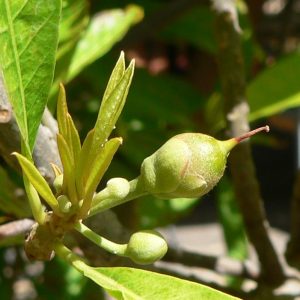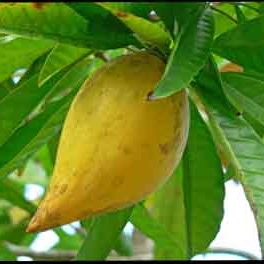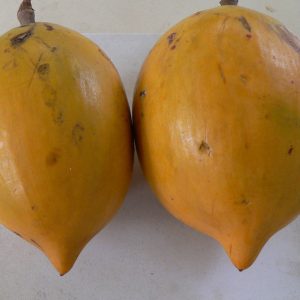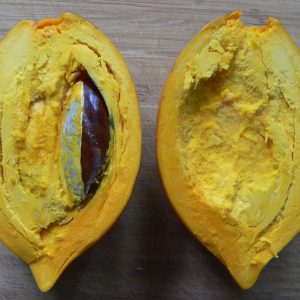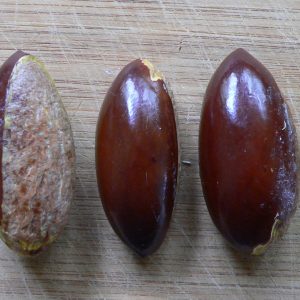Lucuma (Pouteria) campechiana
Canistel, egg fruit, yellow sapote
Origin
This species comes from southern Mexico and Central America and is now grown in other tropical regions including South East Asia and parts of Africa.
Climate
It grows well in sub-tropical and tropical climates with full sun up to 1500m above sea level. It is not frost tolerant. Best fruiting is obtained with minimal dry periods.
Plant Description
Canistel is a tall evergreen tree that grows to 10-15m high in its native habitat but is usually smaller in cultivation, particularly if grafted. It has simple deep green leaves clustered at the ends of branches.
Relatives
Sapotaceae family with its taxonomy being modified many times. Edible relatives include abiu, mamey sapote, sapodilla and star apple.
Soils
It is not demanding of soils provided they are well-drained.
Propagation
This can be done with seeds which, like many tropical species, are recalcitrant and do not withstand prolonged storage. Seedlings can be used as rootstocks for grafting superior varieties.
Cultivars
Several have been recognised, eg Ross, Bruce and Trompo.
Flowering and Pollination
The axillary flowers are hermaphrodite. They are self-fertile, with pollination by insects. In sub-tropical climates, flowering is usually in summer with harvest in winter.
Cultivation
Regular watering is most important throughout the year when the plant is young. For mature plants, particular attention should be given from flowering to cropping. Like citrus, trees need regular fertiliser applications including trace elements, adjusted for tree size.
Wind Tolerance
Good survival in severe storms.
Pruning
Little pruning is required apart from removing overlapping or dead branches or to limit tree size for easier harvesting and spraying.
The Fruit
The fruit is morphologically a berry, ovoid to spindle-shaped, often with a pointed apex, and can weigh 50-600g. The thin smooth skin is light green when immature, changing to bright orange with maturity. The flesh is also yellow-orange, relatively dry, sweet and creamy with 1-5 brown seeds.
Fruit Production and Harvesting
Grafted trees may take 2-4 years to begin flowering and fruiting. With good management, yield can be 40-80kg of fruit/ tree. Fruit should be picked with stem attached when fully coloured, and thereafter allowed to ripen for a week when they will become slightly soft to the touch.
Fruit Uses
It is eaten fresh and contains 35-40% carbohydrates with reasonable levels of calcium and Vitamins A and C. It is also commonly used in desserts and baked goods.
Pests and Diseases
These are generally not a problem, but can include scales and mealy bugs, rust, root rot and anthracnose.
Comments
Some people judge canistel to be too dry for their palate, but for the majority they are a top-tasting fruit, particularly when used as a flavour enhancer in prepared foods. Excellent drinks can be made by blending the fruits with milk plus a dash of cinnamon, nutmeg and vanilla – a fruit eggnog.
